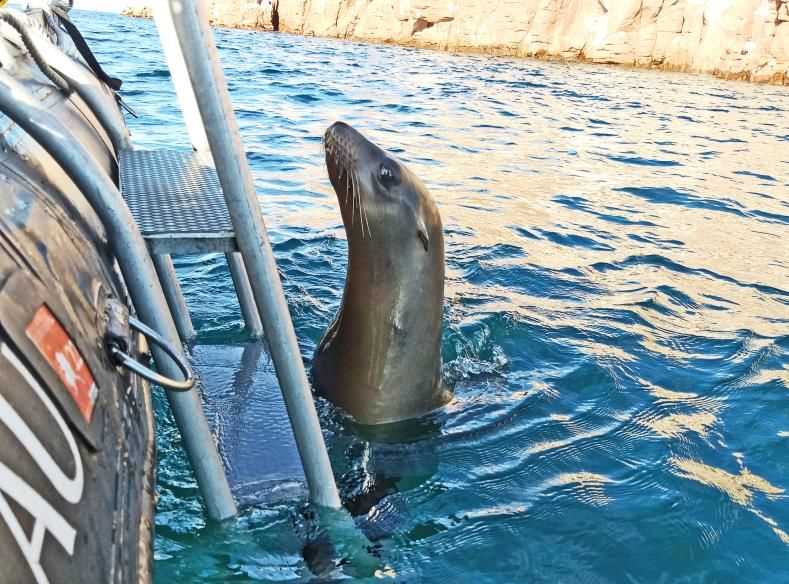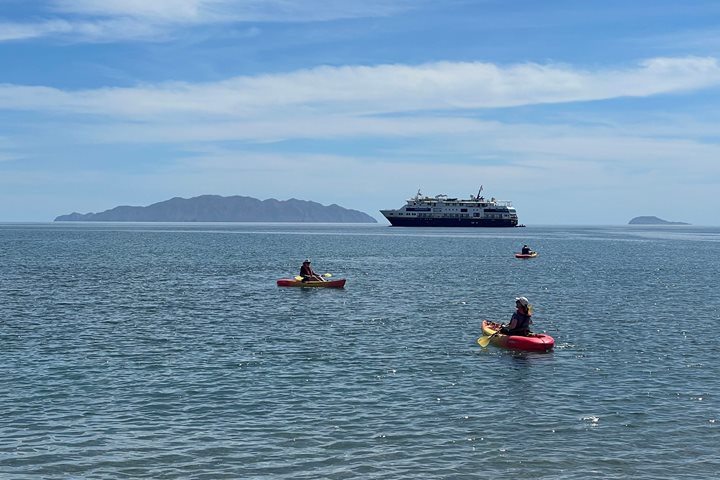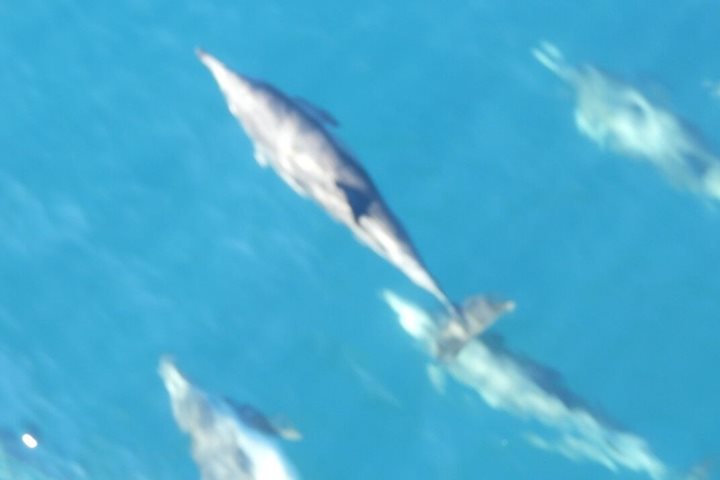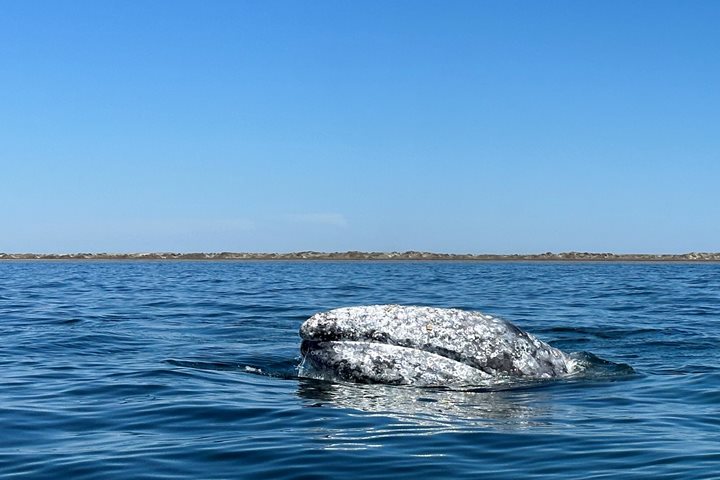National Geographic Sea Bird arrived this morning to Los Islotes, an important resting and breeding rookery for California sea lions, located just a mile north of the Isla Partida-Espíritu Santo complex. It is a protected no-take zone, made entirely of beautifully eroded, pink-red volcanic tuff, so it was the ideal location for snorkeling and photography.
Once the ship anchored, the expedition landing craft took our guests and naturalists for some refreshing snorkeling among the sea lions. Dozens of pups swam and dove around us. Some of the now eight-month-old pups just floated in front of our masks and snorkels, doing their funny playing, whereas others tried to touch our fins, cameras, and even our hands, with their noses and whiskers. They played a lot, chasing each other in fast races in and above the water. One even tried to get on a boat! It was just a fantastic experience, as the photos can testify.
As soon as the snorkeling was over, we boarded our expedition landing craft again for cruises around the rookery, and we discovered other aspects of sea lion life. The huge mature males, with their dark fur and prominent sagittal crest, were chasing other males around, while the pregnant 200-pound females peacefully slept on the boulders. Flying above the islet, or just perched in the middle of the cliffs, frigatebirds, blue-footed and brown boobies, yellow-footed gulls and cormorants, among others, were also part of the scenery.
During lunchtime, National Geographic Sea Bird moved on to San Francisco, a nearby island north of the sea lion colony, for our afternoon activities. In the gorgeous cove of the island, Half-Moon Bay, our guests kayaked and paddleboarded. Then, they chose between two hikes: either exploring the fascinating vegetation and animals or hiking up to the ridge atop a magnificent group of hills, from which there was a great view of the bay. During the hikes, we observed the salt flats in which salt is produced from the seawater (used by local fishermen to preserve the catch), many plants in flower (indigo-bush, goldenheads, asters, daisies, hibiscus, and morning glories), and enjoyed the sight of a female Costa’s hummingbird in her nest.
We finished up our afternoon with a dinner ashore, set against a red, orange, pink, green, and blue sunset, and songs around a bonfire.







